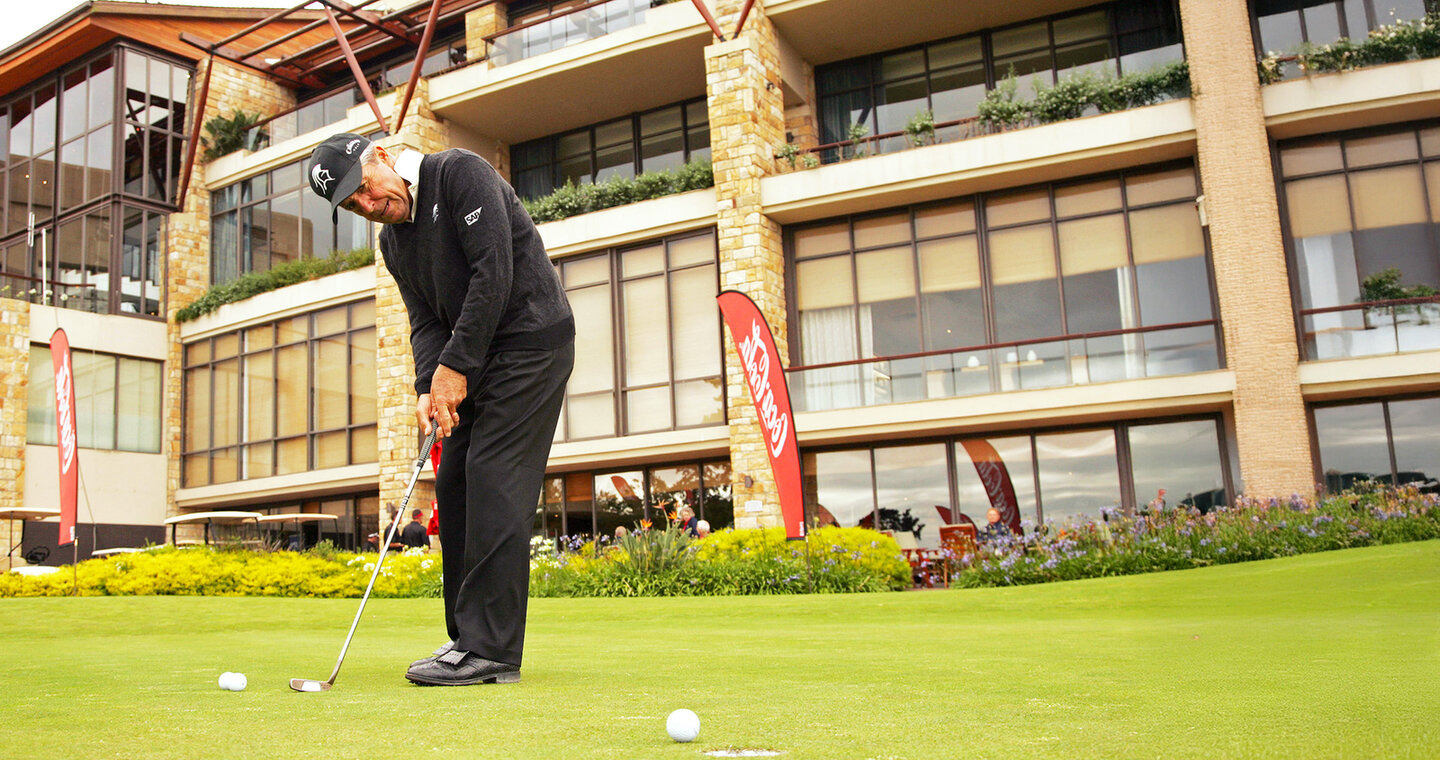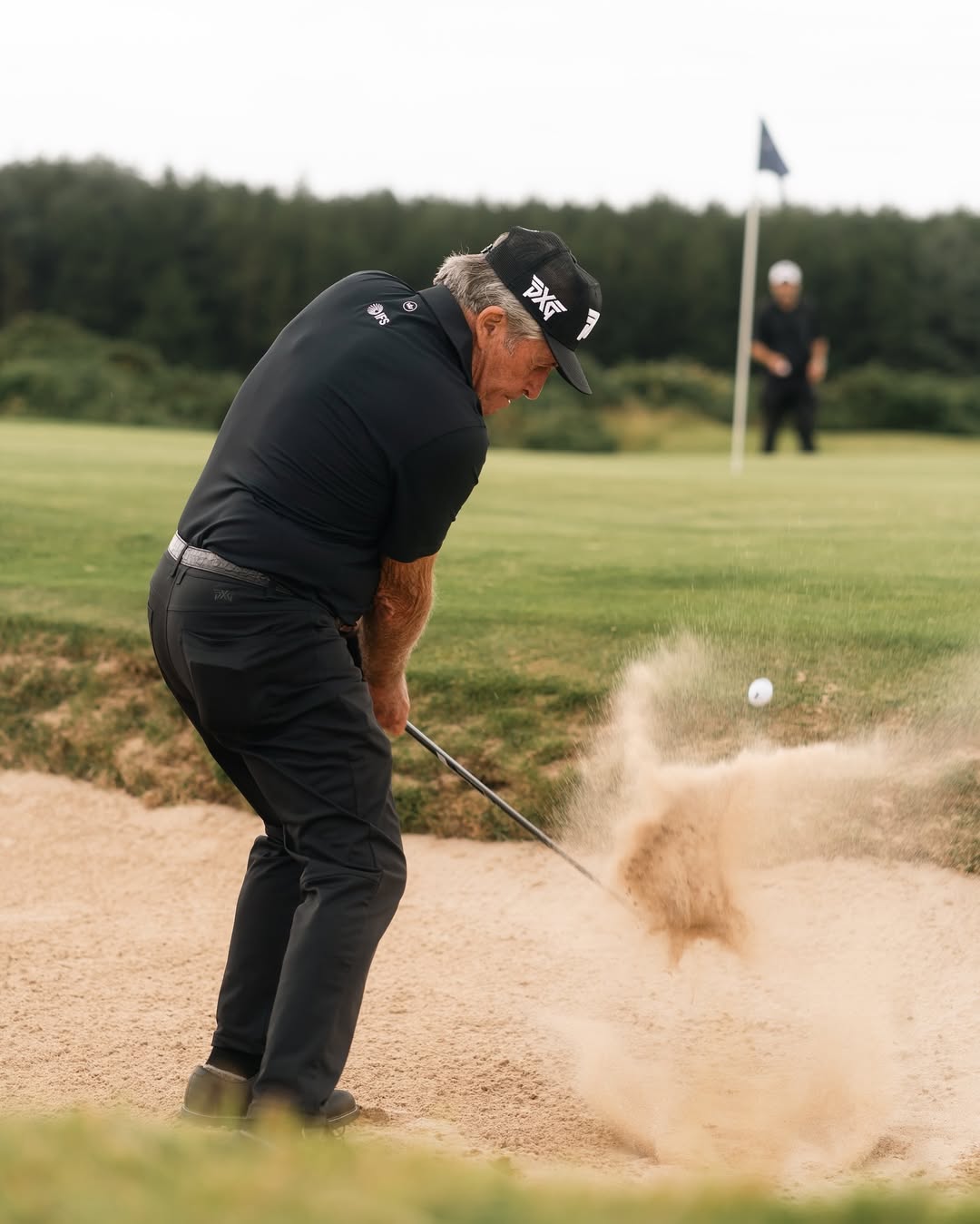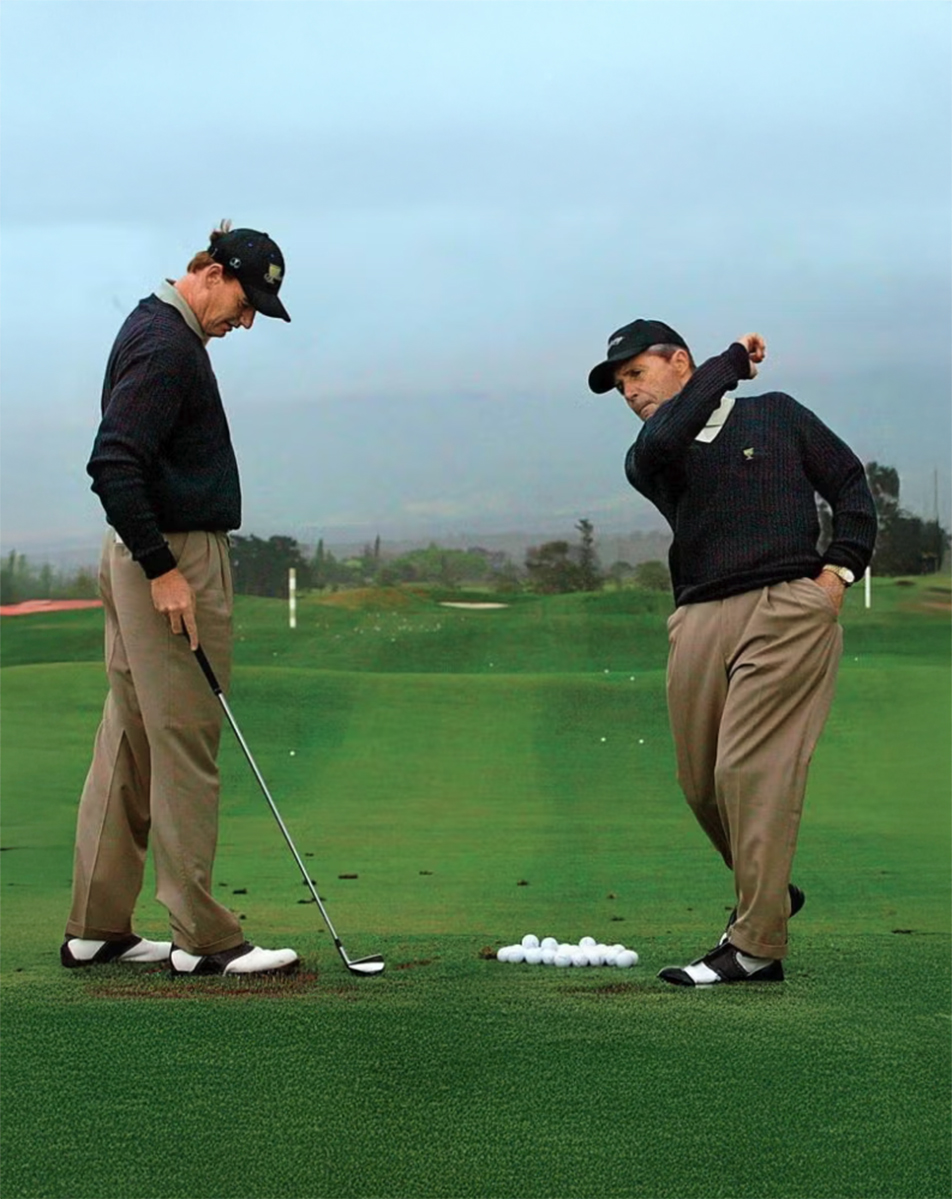
gary player at 90
PRACTICE MAKES
PERFECT
Gary Player has been asked the secrets to his success countless times. Here’s some of his most documented tips
Christiaan Maas’ all-encompassing love for the game is also to the benefit of those who have the privilege of watching him
play
BY CLINTON VAN DER BERG

ON THE SWING
Emphasis on initiating the downswing correctly, by rotating your hips, is in my opinion the key ingredient to playing consistent golf. This is because rotation ensures the hands/arms fall into the correct place, resulting in you hitting the ball from the inside.
On every swing, you should be able to hold your follow through for several seconds in complete balance. Though every player has their own swing, this is a good starting points for amateurs trying to improve.
Most golfers try to hit a straight ball. Hogan said hitting it straight was a ‘fluke’. If you aim up the right side and draw it or vice versa, then you make the fairway as big as possible. If you aim up the middle, you then cut the fairway in half. This means a shot that draws too much ends up in the rough on the left and a ball that fades too much ends up in the right rough. The game is tough enough, so try to give yourself as much advantage as possible.
I always try to take my hands on the inside whilst keeping the clubhead outside the hands on the takeaway.
For power, never swing hard with just your arms. It’s all about your legs and core.
Hold your follow through!

ON PUTTING
You need discipline and intention. One of the best things an amateur can do at home is learn to keep their hands ahead of the ball at impact and make sure wrists are firm through the stroke. That’s fundamental.
The most difficult thing to do is to keep your head still until you hear the ball drop into the cup. Concentrate on a specific mark or dimple. Train your mind, as improving your putting is the easiest way to lower your average score.
Early on I developed a bit of a ‘jab’ stroke, and I wasn’t alone. Bobby Locke, Bill Casper, even Arnold Palmer had that kind of motion. Why? Because the greens we played on weren’t like today. Spike marks, grainy Bermuda, greens cut once a day if you were lucky. On those surfaces, a jab worked. You had to be firm and decisive, especially on short putts.
Green reading is an art and is so important. The most meaningful green-reading tip I received was to use the cup and where it is worn to help with reading the putt. It is a great indicator of what the grain is doing around the hole.
A bad putt is better than a good chip. I love this saying because it is so often accurate. There is no need to hit the ball high unless you need to go over a trap or hazard.

ON BUNKER SHOTS
Weight on the front, cock your wrists, and then you got to ‘strike the match’. Acceleration is vital to successful bunker play.
Strengthening your grip is important as it allows for you to set your wrists quicker, which then allows for you to better ‘strike the match’.
The sweet sound of a crisp bunker shot is music to the ears.
If you’re faced with a long bunker shot, don’t be afraid to use a 9-iron instead of your lob wedge. Swing the same, and this will just help you cover more ground.
ON PITCHING
‘When pitching around the greens, hitting down on the ball is so important. The biggest mistake that amateurs make is trying to ‘scoop’ the ball in order to get into the air. It seems counterintuitive but hit down on it and let the loft do the work.’
‘I rarely see amateurs hit the ball past the flag. Always lean towards hitting the higher club. Trying to hit the ball past the hole will lead to better scoring.
I always tell players the first key is to set your wrists by cocking them as fast as you can. The second tip is acceleration through the ball. Focusing on accelerating through the impact zone is important because, under pressure, you get tense, and more often than not, the first thing you do is decelerate.
ON YARDAGES
‘The key to getting better, as a beginner or a pro, is to be as good as you can be from 100 yards and in. It’s the difference between winning or losing or finally breaking 100, 90, 80, etc. There are many ways to get up and down, so you need to learn to play as many different shots as possible. And that work starts on the range.’
ON SENIOR GOLF
When you get older, you don’t want to be cutting the ball. When you fade, you fade out of the picture. I try to draw it for that extra distance, as well as using proper equipment which today is simply amazing.
I have fond memories of winning the 1997 Senior Open at Royal Portrush, one of the most meaningful victories of my career. I vividly recall the pressure of the playoff against my fellow South African, John Bland, and the 15-foot putt I holed to secure the title.
ON GAME MANAGEMENT
Formulate a plan for each hole and commit to it. Easier said than done.

ON THE DOWNSLOPE
If you are hitting a ball on a downslope, it is important to stay down through impact.
ON WINNING
My first victory on the PGA Tour was at the 1958 Kentucky Derby Open where I took home $2,800. Life-changing money at that time.
